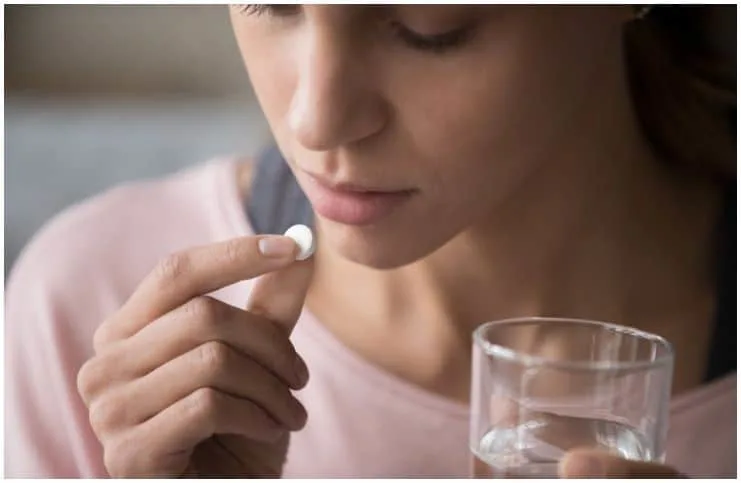Comparison Flonase vs Claritin:
Introduction
Allergies occur when your immune system reacts to a food that doesn’t cause a reaction in most people or a foreign substance (like – bee venom, pollen, or pet dander).
Allergies are very common, and over 50 million people in the United States suffer from allergies.
Symptoms
Symptoms may include one or more of the following:
- odd taste in the mouth;
- hives (itchy areas on the skin);
- slight, dry cough;
- eczema flare (a persistent dry rash);
- sneezing;
- redness of the skin, especially around the mouth or eyes;
- nasal congestion or a runny nose;
- stomach pain;
- diarrhea;
- vomiting;
- nausea;
- itchy mouth.
An allergist can properly diagnose your condition and prescribe an allergy treatment to help you feel better and live better.
Below Is A Comparison Of Two Allergy Medications
Flonase (generic name – fluticasone propionate) is in a class of medications called corticosteroids. This synthetic corticosteroid has an 18-fold higher affinity for the corticosteroid receptor compared with the reference standard for corticosteroid potency (dexamethasone).
Claritin (generic name – loratadine) is an over-the-counter antihistamine medication that was first approved by the US Food and Drug Administration in 1993. It belongs to a family of drugs called histamine H1 antagonists and nasal decongestants.
Its structure resembles that of tricyclic antidepressants, and it is a derivative of azatadine.
It comes in two versions: Claritin and Claritin-D (contains loratadine plus pseudoephedrine – a sympathomimetic medication of the amphetamine and phenethylamine chemical classes). Both versions come in OTC versions as well as by prescription.
Uses
Flonase
It is used to relieve sneezing, stuffy, runny, or itchy nose, and watery eyes caused by hay fever (which can be seasonal, perennial, or occupational) or other allergies (such as – allergy to mold, dust, pollen, or pet).
Note – you should use this medicine every day during the time when you usually have allergy symptoms.
Claritin
It is used to treat the symptoms of allergies, such as watery eyes, sneezing, and runny nose.
Moreover, this antihistamine is used to treat skin hives and itching in sufferers with chronic skin reactions.
Mechanism of Action
Flonase works by blocking the release of certain natural substances that cause allergy symptoms.
Claritin works by blocking the action of histamine that causes allergic symptoms.
Side Effects
Flonase
The most common adverse events associated with this nasal spray treatment during clinical studies included:
- change in taste or smell;
- headache;
- nosebleed;
- nasal irritation or dryness;
- nausea;
- sneezing;
- sore throat.
Call your doctor at once if you experience a serious side effect such as:
- a persistent sore throat;
- difficulty breathing;
- increased thirst;
- swelling of eyelids, face, or lips;
- white spots in the mouth or nose;
- tingling of the hands or feet;
- skin rash or hives;
- fever, chills, or other flu-like symptoms.
Claritin
The most common adverse events associated with this histamine H1 antagonist treatment during clinical studies included:
- somnolence;
- headache;
- fatigue;
- dry mouth.
Call your doctor at once if you experience a serious side effect such as:
- trouble breathing;
- hyperkinesia (involuntary movements like chorea or tics);
- fast/irregular heartbeat;
- nervousness;
- severe itching;
- dysphonia;
- shaking or tremors;
- wheezing;
- rash;
- tongue swelling;
- facial or throat swelling;
- conjunctivitis.
Dosage
Flonase
It is available as a nasal spray and is sprayed into each nostril, usually once per day.
For children 4 to 11 years old, the usual recommended dosage is 1 or 2 sprays in each nostril in the morning. For adults and children 12 years and older, the usual recommended dosage is 2 sprays in each nostril once per day.
Safe and effective use of this nasal spray has not been established for children under the age of 4. Most people achieve relief within 12 hours of starting to use the product. However, it may take a few days for you to get the full benefit of the drug.
When you use this nasal spray for the first time, you must prime the spray.
Claritin
The usual recommended dosage is 1 tablet daily. Do not take more than 1 tablet in 24 hours.
Warnings & Precautions
Flonase should not be used to treat symptoms (like – sneezing, runny, stuffy, itchy nose) caused by the common cold.
You should not take Claritin if you are allergic to loratadine or to other ingredients in this product. In addition, Claritin may contain phenylalanine, a precursor for catecholamines including dopamine, epinephrine, tyramine, and norepinephrine. Talk to your healthcare professional before using this medicine if you have phenylketonuria (an inherited disorder that increases the levels of phenylalanine in the blood).
Do not give loratadine to a child younger than 6 years old without the advice of a healthcare professional. Also, ask your doctor before taking this medicine if you have kidney or liver disease.
ALSO READ: Pazeo vs Pataday
Drug Interactions
Flonase may negatively interact with:
- clarithromycin (sold under the brand name Biaxin);
- amprenavir;
- conivaptan;
- atazanavir;
- delavirdine (a non-nucleoside reverse transcriptase inhibitor);
- boceprevir;
- fosamprenavir;
- cobicistat;
- itraconazole;
- dasabuvir/ombitasvir/paritaprevir/ritonavir;
- mibefradil;
- idelalisib;
- nelfinavir;
- indinavir (a protease inhibitor);
- nefazodone;
- lopinavir/ritonavir;
- ketoconazole.
Claritin may negatively interact with:
- Sprycel (dasatinib);
- Prezista (darunavir);
- Pacerone (amiodarone);
- Nexterone;
- Cordarone;
- ketoconazole (Nizoral);
- erythromycin (E-Mycin).
ALSO READ: Euflexxa vs Synvisc
Alcohol or Tobacco
Flonase
Using alcohol or tobacco with fluticasone propionate may also cause interactions to occur. Talk to your doctor about the use of fluticasone propionate with alcohol, or tobacco.
Claritin
Because both alcohol and loratadine may cause drowsiness and dry eyes, you should avoid drinking alcoholic beverages while taking this medicine.
ALSO READ: Citrucel vs Metamucil
Is It Safe During Pregnancy or Breastfeeding?
Flonase
There are no adequate studies on women to determine infant risk when using this medication during breastfeeding. Weigh the potential benefits against the potential risks before using fluticasone propionate while breastfeeding.
There are no adequate studies on pregnant women to determine the risks in fetal development. Weigh the potential benefits against the potential risks before using fluticasone propionate while pregnant.
Claritin
You should also alert your healthcare provider if you are breastfeeding or plan to breastfeed. It is not recommended to breastfeed an infant while taking this medication.
This drug is a pregnancy category B drug, which means it should not cause harm to an unborn child.
Conclusion – Flonase vs Claritin
Flonase (fluticasone propionate) belongs to the class of medications called corticosteroids. Fluticasone propionate is used to treat seasonal allergic rhinitis, including perennial rhinitis and hay fever.
Claritin (loratadine) is an antihistamine that works by blocking histamine, a substance in the human body that causes allergic symptoms. This antihistamine is used to relieve hay fever and allergy symptoms, including watery eyes, sneezing, and runny nose.
According to a March 4, 2002 study which was done at the University of Chicago and was presented at the 58th annual meeting of the American Academy of Allergy, Asthma and Immunology, the corticosteroid nasal spray Flonase is slightly more effective at controlling seasonal allergies than a combination of montelukast (brand name – Singulair) and loratadine (brand name – Claritin).
Can You Take Claritin And Flonase Together?
According to the data, there are no negative interactions between Claritin and Flonase. Therefore, both medications can be used, depending on the clinical symptoms and the response to treatment.
Sources https://www.jacionline.org/article/S0091-6749(16)32333-8/pdf https://www.ncbi.nlm.nih.gov/pmc/articles/PMC5244277/

